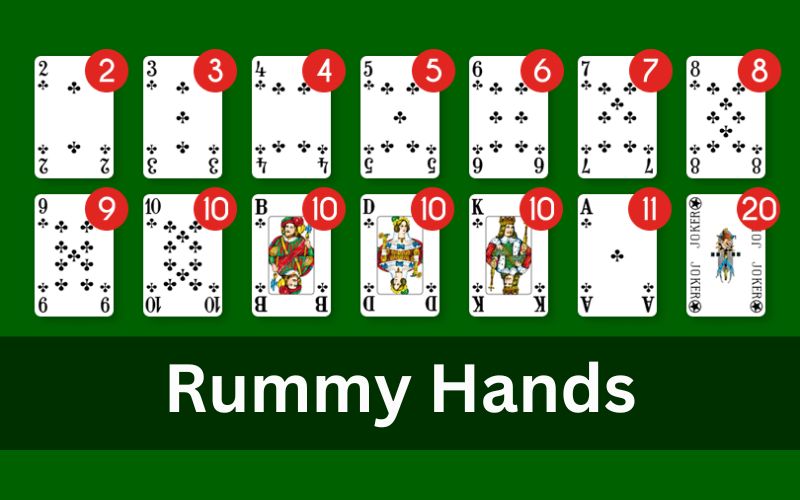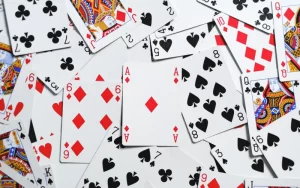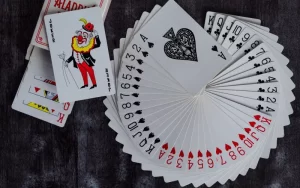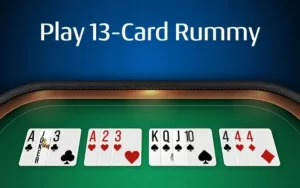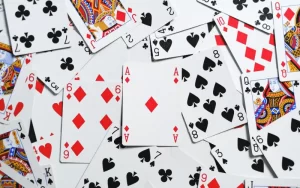Rummy is a widely cherished card game known for its blend of strategy, skill, and luck. It’s enjoyed globally in various forms, with players always looking to improve their understanding of essential components—like rummy hands. Understanding rummy hands is a vital skill for excelling in the game, as the combination of cards in each hand directly influences your chances of winning.
This guide will delve into everything you need to know about rummy hands, including a list of common hands, a rummy hands chart, and the rules governing hand formation. By the end, you’ll have a well-rounded understanding of how to create winning rummy hands, evaluate your options, and apply effective strategies.
Basics of Rummy Hands
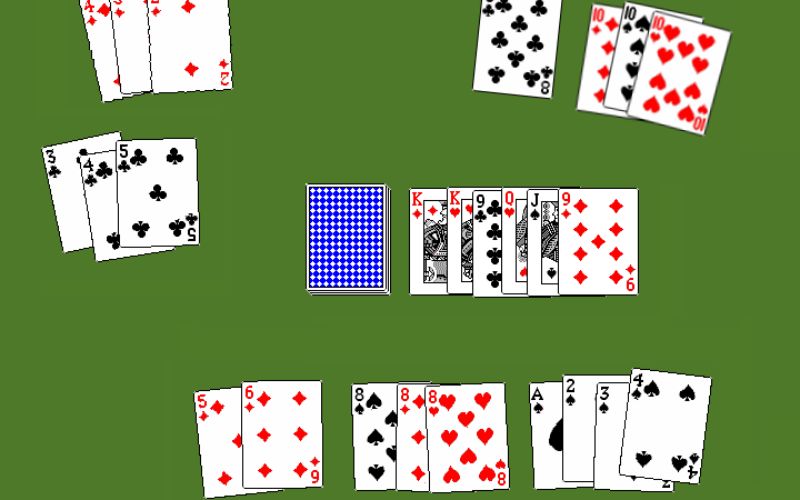
Rummy is primarily about forming sequences and sets from the cards dealt, where a “hand” refers to the collection of cards each player holds. The goal is to arrange these cards into valid groups. Here’s an overview of key terms:
- Sequences: A consecutive series of cards in the same suit. For example, 5-6-7 of Hearts is a valid sequence.
- Sets: A group of cards with the same value across different suits, like 3 of Hearts, 3 of Diamonds, and 3 of Clubs.
- Pure Sequence: A sequence without using a wild card or joker, necessary for declaring a winning hand.
- Impure Sequence: A sequence that includes one or more jokers or wild cards to complete it.
Mastering these components will give you a solid foundation for working with different rummy hands effectively.
Rummy Hands List: Common Types of Winning Hands
Each rummy hands list has its own significance and can vary in formation depending on the variant of the game. Below is a list of the most common types of hands in rummy:
- Pure Sequence: As mentioned, a pure sequence is mandatory for a valid declaration in rummy. A hand must contain at least one pure sequence.
- Impure Sequence: An impure sequence is often formed to complete the required hand when a pure sequence is already present. It can use jokers to replace missing cards.
- Triplet: Also known as a set, a triplet consists of three cards of the same rank but different suits, such as King of Spades, King of Diamonds, and King of Hearts.
- Four-Card Set: Some rummy variants allow players to form sets of four cards with the same rank, further increasing the potential for completing a hand.
- Joker Usage Hand: Jokers or wild cards are crucial for completing impure sequences and sometimes even sets, making them valuable in situations where specific cards are unavailable.
Each hand type plays a unique role in achieving a winning combination, with pure sequences being the most significant.
Rummy Hands Chart: Visual Guide for Quick Reference
A rummy hands chart can be an excellent tool for players, especially beginners, to quickly understand and identify valid hands. Here’s a sample rummy hands chart with examples for reference:
| Hand Type | Description | Example |
| Pure Sequence | Consecutive cards, same suit | 4♣ 5♣ 6♣ |
| Impure Sequence | Sequence with a joker | 7♦ 8♦ Joker |
| Triplet | Three cards, same rank | 9♠ 9♦ 9♣ |
| Four-Card Set | Four cards, same rank | J♥ J♠ J♦ J♣ |
| Joker Usage | Any set or sequence with jokers | 2♠ 3♠ Joker (forming impure sequence) |
This chart is a quick-reference guide to keep handy during gameplay, enabling you to identify valid hands swiftly.
Key Rummy Hands Rules for Winning
The rules governing rummy hands determine how you can declare a winning hand. Here’s a breakdown of essential rummy hands rules every player should know:
Rule #1: Formation of Sequences
To make a valid declaration, a player must have at least two sequences—one of which must be a pure sequence. Failure to meet this rule results in an invalid hand, no matter the other card combinations.
Rule #2: Use of Jokers
Jokers can be used to replace missing cards in sequences and sets, creating an impure sequence or completing sets. However, jokers cannot be used to form a pure sequence. Knowing where and when to use jokers effectively can turn the game in your favor.
Rule #3: Valid Sets
While forming sets, ensure that each card in a set has a unique suit. For instance, three Kings (of Hearts, Diamonds, and Spades) form a valid set, but duplicate cards from the same suit make it invalid.
Rule #4: Declaring a Hand
Once your cards are arranged into valid sequences and sets, you can make a declaration. It’s essential to verify your arrangement before declaring, as incorrect declarations lead to penalties.
Strategies for Forming Winning Rummy Hands
Creating strong rummy hands is more than just adhering to rules—it involves strategic thinking. Here are some tips to increase your chances of forming winning rummy hands:
- Prioritize Pure Sequences: Start by focusing on creating a pure sequence early in the game. This minimizes the risk of ending up with invalid declarations.
- Use Jokers Wisely: Reserve jokers for impure sequences or to complete sets, as they’re highly versatile and can save you from difficult situations.
- Discard High-Value Cards: If high-value cards aren’t useful in forming sequences or sets, consider discarding them early. Holding onto high-value cards can increase your point count if the opponent declares.
- Monitor Opponents’ Moves: Observing what cards your opponents pick and discard can give you hints about their strategy and what hands they might be aiming to complete.
Conclusion
Understanding rummy hands is the cornerstone of excelling in the game. By mastering the various types of hands, using tools like the rummy hands chart, following the rules, and implementing effective strategies, you’ll be well-prepared to play rummy competitively. Each hand you play is an opportunity to hone your skills and improve your strategic approach to the game.
Whether you’re a beginner or a seasoned player, refining your knowledge of rummy hands can provide a distinct advantage. Keep this guide handy, stay observant, and practice forming hands efficiently—soon, you’ll find yourself making confident declarations and enjoying more victories in the game of rummy.

